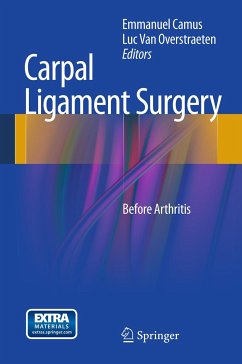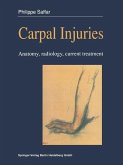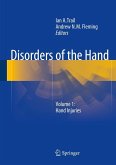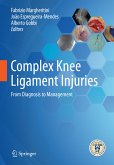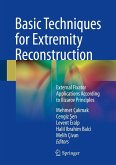Nowadays, it is established that carpal ligamentary lesions may lead to instability and then to carpal arthritis. However, the variety of anatomopathological classifications and the multiplicity of surgical repair techniques reflect the difficulty of conceiving this ligamentary pathology. The clinical analysis and traditional investigation techniques face the complexity of the wrist. Its mechanical complexity is due to the number of synchronized bones in every movement of the hand. The clinical analysis of the wrist is insufficient to precisely measure the mobility of each carpal bone. Paraclinical examinations are also significant for clinical diagnosis. The tools available today range from X-rays to arthroscopy, including arthroCTscan and soon MRI. As concerns repair techniques, their diversity must not hide the fact that a biomechanical and physiological principle is involved and must be identified. This book is the result of a reflection of an expert group in the field of wrist pathology. It attempts to analyze, understand, explain and make comprehensible, if not obvious, the reflections that each practitioner should employ during the diagnosis and treatment of carpal ligamentary lesions. The focus is consciously not on degenerative carpal pathology, which usually enjoys more visibility. We hope that readers will benefit from the fact that fragmented pieces of knowledge are gathered in a single work, that they will find in this beginning synthesis inspiring to rethink a difficult and sometimes thankless surgery and to further the surgical advances of the 21st century.
Dieser Download kann aus rechtlichen Gründen nur mit Rechnungsadresse in A, B, BG, CY, CZ, D, DK, EW, E, FIN, F, GR, HR, H, IRL, I, LT, L, LR, M, NL, PL, P, R, S, SLO, SK ausgeliefert werden.

